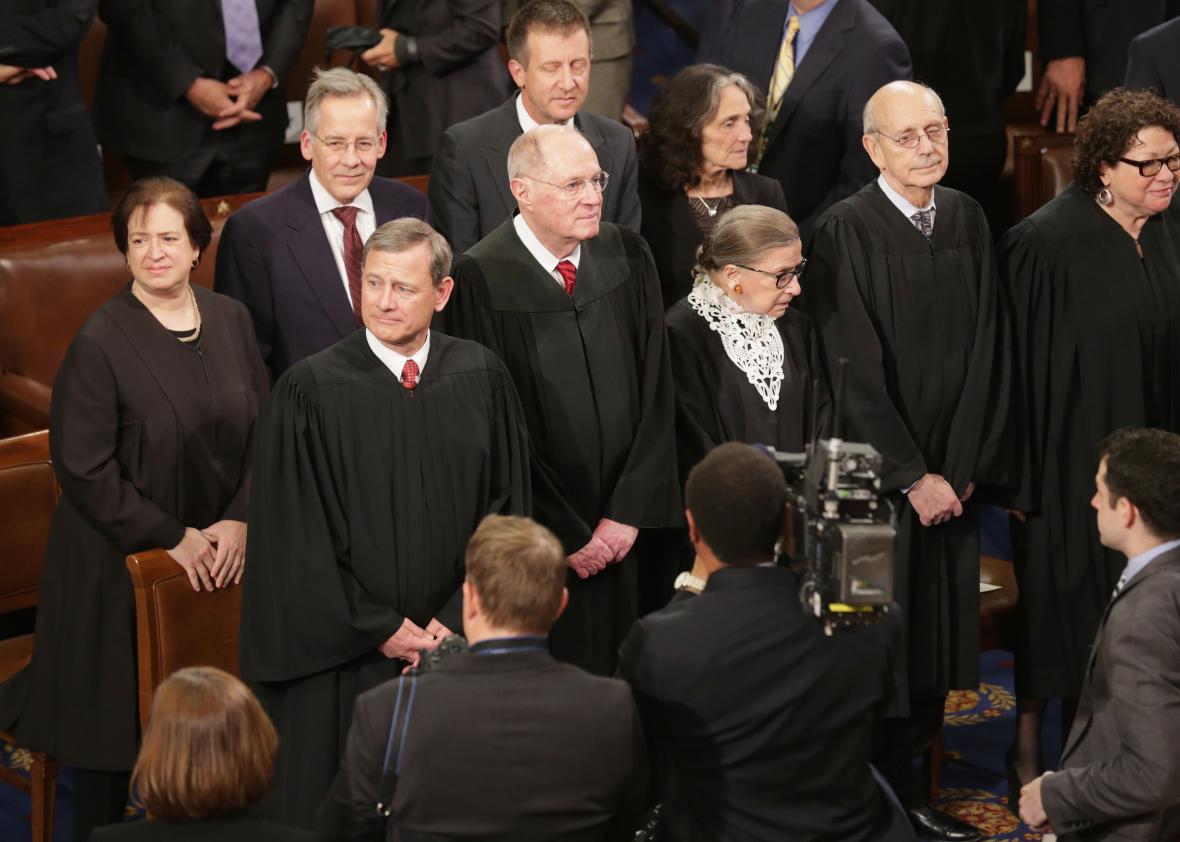Monday was a bad day at the Supreme Court for racist prosecutors, racist employers, and racist congressmen. My colleague Dahlia Lithwick is covering the court’s rebuke of those grotesquely racist prosecutors; let’s focus here on the stinging defeats that the justices handed bigoted employers and gerrymandering legislators.
First up is Green v. Brennan, a critically important decision that will undoubtedly help victims of workplace discrimination achieve restitution. Marvin Green was a mailman who suffered serious racial discrimination at work. He complained to an Equal Employment Opportunity counselor—and, in response, his superior at the Postal Service launched a campaign of retaliation. Eventually, unable to endure further harassment, Green quit. Shortly thereafter, he contacted another EEO counselor to complain of “constructive discharge”—meaning his workplace had grown so hostile that he was essentially forced to resign.
A judge, however, dismissed Green’s case for not being filed in a timely enough fashion, and an appeals court affirmed the ruling. Federal law requires constructive discharge plaintiffs to contact an EEO counselor within 45 days of the “matter alleged to be discriminatory”—and by the time Green reached out to the EEOC, it had been longer than 45 days since his employer actively discriminated against him. Even if all the horrible facts in Green’s complaint was correct, the court held, his case could not move forward.
The Supreme Court reversed that ruling on Monday, with only Justice Clarence Thomas dissenting. (As is his wont, Justice Samuel Alito filed a separate concurrence, floating his own funky theory why the lower ruling should be overturned and nitpicking at the majority’s logic.) Writing for six justices, Sonia Sotomayor explained that “the ‘matter alleged to be discriminatory’ in a constructive discharge claim necessarily includes the employee’s resignation.” Sotomayor noted that, according to the “standard rule” governing statutes of limitations, the “limitations period commences when the plaintiff has a complete and present cause of action.” What does that mean? It means that period begins when the plaintiff “can file suit and obtain relief.” Plaintiffs may only sue for constructive discharge when “working conditions become so intolerable that a reasonable person in the employee’s position would have felt compelled to resign.” So a constructive discharge plaintiff only has a “complete and present cause of action” once he has actually quit.
To see why this decision is correct, just imagine the implications of the opposite outcome. As I explained after oral arguments:
The problem with this theory is that—especially in the case of highly abusive discrimination—no employee wants to file his claim while he’s still at that job. To do so would be to invite further mistreatment and hostility. That’s the whole point of the “constructive discharge” theory: It allows employees to pursue their claims once they’re safely removed from the toxic, bigoted workplace.
But if employees had to report direct discrimination within 45 days of the event, many would be put in an unenviable position: They could either allege discrimination and stay in that now likely more toxic environment, or quit and lose their paycheck.
Sotomayor’s decision avoids forcing workers into this nasty quandary. Instead, it allows wronged employees to leave the workplace then bring a constructive discharge claim within 45 days of that departure, counting their resignation as the culmination of unbearable discrimination. The bottom line today is that, thanks to the high court, Marvin Green will now get another shot at justice.
Next up is Wittman v. Personhuballah, a small, confusing case whose complexity concealed its potential to wreak a lot of havoc. In 2012, Republican state legislators in Virginia redrew a majority-black congressional district to pack even more black voters in. Their gerrymandering arguably reduced these minorities’ voting power, and a handful sued. A three-judge district court held that the new district constituted an unconstitutional racial gerrymander and appointed a “special master” to redraw the districts on nonracial grounds.
In between then and now, Virginia’s executive branch switched hands, from Republican to Democrat. The new Democratic attorney general refused to defend the old, racist maps. So several congressmen stepped in, arguing that they should be allowed to defend the old maps (and attack the court-ordered new maps) because the old maps favored them electorally and the new maps disadvantaged them.
Ultimately, three congressmen arguably had standing to challenge the maps. But two failed to present any evidence that the new maps harmed them, and one decided to run in a new district rather than risk it in his old one. Accordingly, the Supreme Court unanimously held that none of the three congressmen had legal authority to challenge the new maps, and dismissed their appeal without a peep of dissent.
Green and Personhuballah aren’t exactly landmark cases, but they are small triumphs against racial discrimination in American life. Because of these rulings, employees who have suffered discrimination will not be forced to stay in a toxic workplace to preserve those discrimination claims, and conservative congressmen will not be able to fight to exclude more minority voters from their districts. That’s great news for anyone who cares about even-handed justice. And on this depleted bench, we have to take our wins where we find them.
